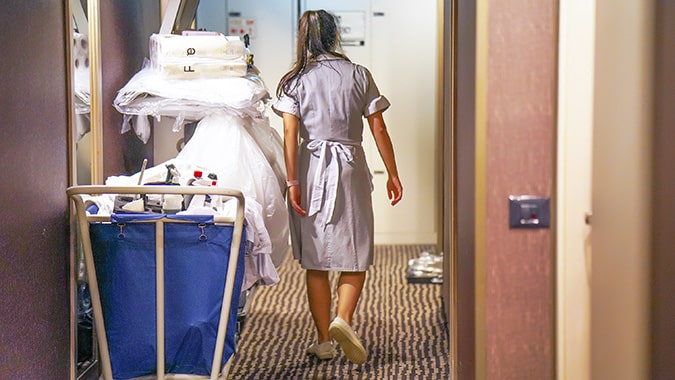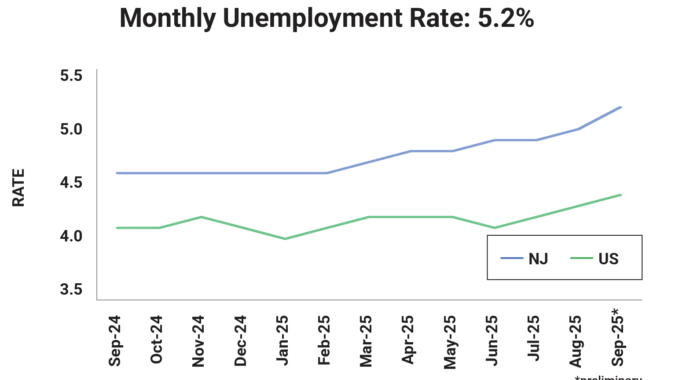The federal government is making available nearly 65,000 additional H-2B temporary nonagricultural worker visas for the 2025 fiscal year, providing relief to employers who are unable to find willing and qualified U.S. workers for their businesses.
The H-2B program is typically used by employers who are unable to find U.S. workers for temporary nonagricultural positions, including jobs in restaurants, bars, hotel housekeeping, tourism, landscaping, seafood processing and construction.
As it has done in past years, the U.S. Department of Homeland Security (DHS) and the U.S. Department of Labor (DOL) published a final rule in the Federal Register on Monday permitting the release of an additional 64,716 H-2B exit visas for FY 2025. This supplements the congressionally mandated 66,000 H-2B visas that are made available each fiscal year.
“There are employers across the country that would suffer greatly without H-2B workers,” said U.S. Homeland Security Secretary Alejandro Mayorkas in a statement last week. “Authorizing these supplemental visas helps U.S. employers fill those positions. It helps fuel our economy and reduce irregular migration while also providing a safe and lawful pathway to the United States for noncitizens who are prepared to work.”
The supplemental allocation of 64,716 H-2B temporary nonagricultural worker visas for FY 2025 is the maximum allowed by Congress. In coordination with the DOL, DHS has allocated additional H-2B visas every year since FY 2017, with an exception for FY 2020, when COVID-19-related closures affected labor demands across the United States.
The supplemental H-2B visa allocation consists of roughly 44,700 visas available to returning workers who received an H-2B visa or held H-2B status in FY 2022, FY 2023, or FY 2024, regardless of their country of nationality. The remaining 20,000 visas are reserved for nationals of Colombia, Costa Rica, Ecuador, El Salvador, Guatemala, Haiti, and Honduras, regardless of whether they are returning workers.
The 64,716 supplemental H-2B visas have been divided into the following four allocations:
- First half of FY 2025 (Oct. 1, 2024, to March 31, 2025): 20,716 immediately available visas are limited to returning workers – those who were issued H-2B visas or held H-2B status in fiscal years 2022, 2023, or 2024, regardless of country of nationality. These petitions must request employment start dates on or before March 31, 2025.
- Early second half of FY 2025 (April 1, 2025, to May 14, 2025): 19,000 visas are limited to returning workers – those issued H-2B visas or who held H-2B status in fiscal years 2022, 2023, or 2024, regardless of country of nationality. These early second half of FY 2025 petitions must request employment start dates from April 1, 2025, to May 14, 2025.
- Late second half of FY 2025 (May 15, 2025, to Sept. 30, 2025): 5,000 visas are limited to returning workers – those issued H-2B visas or who held H-2B status in fiscal years 2022, 2023, or 2024, regardless of country of nationality. These late second half of FY 2025 petitions must request employment start dates from May 15, 2025, to Sept. 30, 2025.
- Entirety of FY 2025: 20,000 visas immediately available are reserved for nationals of Colombia, Costa Rica, Ecuador, El Salvador, Guatemala, Haiti, and Honduras, regardless of whether those nationals are returning workers. Employers requesting an employment start date in the first half of FY 2025 may file their petitions immediately. Employers requesting an employment start date in the second half of FY 2025 must file their petitions no earlier than 15 days after the second half statutory cap is reached.
Employers seeking to hire H-2B workers under the FY 2025 supplemental cap must attest that they are suffering or will suffer impending irreparable harm without the ability to employ all of the H-2B workers requested on the petition. The employment must be for a limited period, and the petitioner must have a temporary need for services or labor to be performed, that is, a one-time occurrence, peak load need, seasonal need, or intermittent need.
Employers seeking to hire H-2B workers must take a series of steps to test the U.S. labor market. They must provide certification from DOL that proves there are not enough U.S. workers who are able, willing, qualified, and available to do the temporary work for which they seek a prospective foreign worker, and that employing the H-2B workers will not adversely affect the wages and working conditions of similarly employed U.S. workers.



